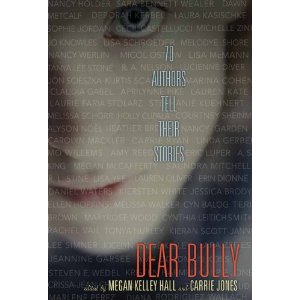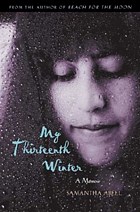Not Quite What I Was Planning: Six-Word Memoirs by Writers Famous and Obscure from SMITH Magazine, edited by Rachel Fershleiser and Larry Smith; published by Harper Perennial, New York, 2008; 221 pages.
According to the introduction, this collection was inspired by an urban legend. Supposedly, someone challenged Ernest “Papa” Hemingway to write a six word novel. His response? “For sale: baby shoes, never worn.” Six must be a magic number; Papa’s six-word novel, the six degrees of Kevin Bacon game, and now six-word memoirs. Also according to the introduction:
Launched online in 2006, SMITH Magazine celebrates personal storytelling and the ways in which technology has fueled storytelling’s growth and infinite possibilities. We like to be both populist and aspirational, blurring the line between professional and amateur. So in November 2006, while thousands of people were cranking out tens of thousands of words during annual National Novel Writing Month, SMITH decided to lower the bar. We gave Hemingway’s form a new, personal twist: What would a six-word memoir look like?
The response was apparently overwhelming. Professional and amateur writers alike submitted their memoirs.
Some related only a turning-point, or a single event, in life. (He knew her bruises would fade. ~Colin Stanton; Torrential tryst. Terrible twins. Tied tubes. ~M. Brenner; Never should have bought that ring. ~Paul Bellows)
Others were somehow able to summarize a lifetime in but six little words. (Forest peace, sharing vision, always optimistic. ~Jane Goodall; Fight, work, persevere–gain slight notoriety. ~Harvey Pekar; Coulda, shoulda, woulda: a regretful life. ~Joe Maida)
Some memoirs were ridiculous. (Mushrooms. Clowns. Wands. Five. Wig. Thatched. ~Amy Sedaris; Can my words have footnotes, please? ~Amy Harbottle; Underachieving…but willing to overcompensate halfheartedly. ~Frank J. Lepiane)
Others were sublime. (I hope to outlive my regrets. ~Bob Logan; Cursed with cancer. Blessed with friends ~Hannah Davies; Blade cuts, blood runs, scars remain. ~Heather Hudgins)
The editors note that this book has inspired many teachers to use the concept as a writing exercise with their students. That idea occurred to me as well. In fact, wouldn’t it be interesting to have the students write their memoirs once a quarter? Or at least at the beginning and then again at the end of the school year? As a librarian, I could plan a program around the concept.
I thought I would just rip through this book, but it was far from a quick read. I found myself contemplating the memoirs, wondering about the authors. I daydreamed about my memoir and wrote down the ones that struck a chord. This is a book that will nag at the corners of my mind; I will reread and then rewrite. Although the book was written for adults, I can certainly see the appeal to young adults. Who is more narcissistic than a teenager? The idea of autobiography or memoir would strike a chord with most teens and the challenge of writing only six-words would hook them.
3P 5Q Grade Level: 8-12+ (adult book marketed to teens)
 Cover Art: The cover is like a concrete poem: The number six is created by the words of the title and editor’s name. The black background with white, red, turquoise and chartreuse type would definitely appeal to teens. It was confusing for me to read and I think it will confuse teens, but they might like the puzzle challenge of it. Since the book was not intended solely for the teen audience, I don’t think the cover was designed to appeal to them. The title is written in white typeface on the black background; the words are typed in portrait and landscape mode to fit it all on the spine. It was hard to read on the shelf.
Cover Art: The cover is like a concrete poem: The number six is created by the words of the title and editor’s name. The black background with white, red, turquoise and chartreuse type would definitely appeal to teens. It was confusing for me to read and I think it will confuse teens, but they might like the puzzle challenge of it. Since the book was not intended solely for the teen audience, I don’t think the cover was designed to appeal to them. The title is written in white typeface on the black background; the words are typed in portrait and landscape mode to fit it all on the spine. It was hard to read on the shelf.
From Reading List: Too Good to Be True Nonfiction; Quick Pick for Reluctant Readers (YALSA), 2009.
 Cover Art: We all know teens are attracted to covers with faces. This one is compelling because of the face with the overlay of contributors names: intimating that we all have to take responsibility for this pandemic.
Cover Art: We all know teens are attracted to covers with faces. This one is compelling because of the face with the overlay of contributors names: intimating that we all have to take responsibility for this pandemic. Cover Art: The image of a face (the author’s?) appears to be on the other side of a rain-beaten window pane. That’s the first clue that this is the story of someone that exists “on the other side.” Perhaps that image, along with the fact that this is a memoir, will generate interest in the title. Frankly, I think this book will have to be pointed out to a young adult for them to read it. I found it in the adult biographies at my local library.
Cover Art: The image of a face (the author’s?) appears to be on the other side of a rain-beaten window pane. That’s the first clue that this is the story of someone that exists “on the other side.” Perhaps that image, along with the fact that this is a memoir, will generate interest in the title. Frankly, I think this book will have to be pointed out to a young adult for them to read it. I found it in the adult biographies at my local library. Cover Art: The silhouettes of Charles and Emma on aged parchment are old-fashioned and wouldn’t be eye-catching except for the ape walking on two legs behind Charles and Emma’s cross dangling from her hands. Is that enough to interest teens? Yeah, it’s kinda funny, but I don’t think most will “get” it nor will it generate interest. This is going to have to be assigned or recommended.
Cover Art: The silhouettes of Charles and Emma on aged parchment are old-fashioned and wouldn’t be eye-catching except for the ape walking on two legs behind Charles and Emma’s cross dangling from her hands. Is that enough to interest teens? Yeah, it’s kinda funny, but I don’t think most will “get” it nor will it generate interest. This is going to have to be assigned or recommended. Cover Art: The yellow background is eye-catching. Adding the sketched windmill with a photo of Kamkwamba is intriguing. Perhaps the combination of the art and the title will appeal to teens. I personally loved the subtitle: “Creating Currents of Electricity and Hope.”
Cover Art: The yellow background is eye-catching. Adding the sketched windmill with a photo of Kamkwamba is intriguing. Perhaps the combination of the art and the title will appeal to teens. I personally loved the subtitle: “Creating Currents of Electricity and Hope.”
 Cover Art: The partial profile of “Ana” and the bright red, sweeping font on the white cover will generate interest for males and females alike. The same font, in red, on the white spine also stood out on the shelves; I was browsing and spotted it right away and decided to read it.
Cover Art: The partial profile of “Ana” and the bright red, sweeping font on the white cover will generate interest for males and females alike. The same font, in red, on the white spine also stood out on the shelves; I was browsing and spotted it right away and decided to read it.


